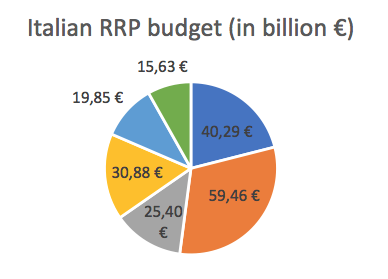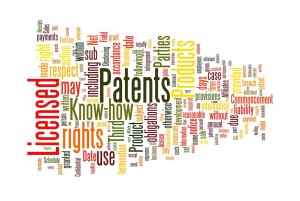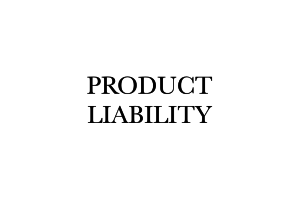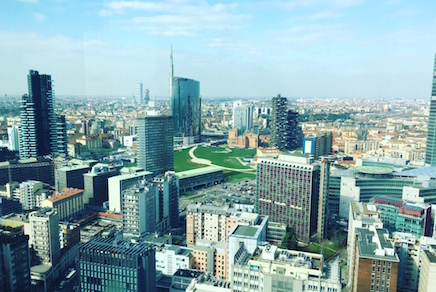The RRP – Recovery and Resilience Plan (in Italian PNRR – Piano Nazionale di Ripresa e Resilienza also promoted as “Italia domani” project) is a €191.5 billion plan adopted by Italy in April 2021 in order to assure a robust, sustainable and inclusive economic growth of the country in the coming years. The background is certainly the need to cope with the economic problems caused by the restrictive measures adopted 2020-21 in response to the COVID pandemic, however the RRP seizes the opportunity to reorganize the country’s infrastructures along more efficient trajectories (with a particular emphasis on the Southern regions of Italy that are expected to receive the 40% of the resources), and shake up an economy that has been stagnant for years.
The RRP received the EU Commission’s green light in June 2021, as consistent with the EU Next Generation initiative and eventually was approved by the EU Council in July. Approximately one third of the budget (€68,9 billions) will consist in grants, and the rest (€122,6 billions) will be loans. Disbursement of funds will be performance-based, and will reflect progress on reforms and investments set out in the RRP. A first €24,9 billion tranche was disbursed in August 2021, and a second request for €21 billions of December 2021 has been positively assessed.
The package will be added to the already allocated 2021-26 budget (some €90 billion worth).
Six basic ‘missions’ have been identified in the RRP (grouping 16 ‘components’ and 48 ‘lines of intervention’), each mission having set milestones requiring full completion within August 2026.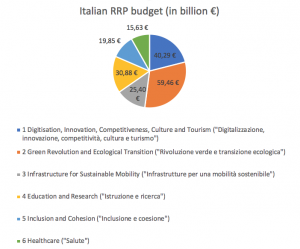
In details-
Mission 1: Digitalization, Innovation, Competitiveness, Culture & Tourism
Component 1: Digitilization, Innovation and Security in the Public Sector
Component 2: Digitilization, Innovation and Competitiveness in the Productive System
Component 3: Tourism and Culture 4.0
Mission 2: Green Revolution and Ecological Transition
Component 1: Circular Economy and Sustainable Agriculture
Component 2: Renewable Energy, Hydrogen, Grid and Sustainable Mobility
Component 3: Energy Efficiency and Building Renovation
Component 4: Protection of Land and Water Resources
Mission 3: Infrastructures for Sustainable Mobility
Component 1: Investments in the Railway Network
Component 2: Intermodality and Integrated Logistics
Mission 4: Education and Research
Component 1: Enhancement of Education Services: from Kindergartens to Universities
Component 2: Research for the Enterprises
Mission 5: Inclusion and Cohesion
Component 1: Employment Policies
Component 2: Social Infrastructure, Families, Communities and Third Sector
Component 3: Special Interventions for Territorial Cohesion
Mission 6: Health
Component 1: Proximity Networks, Facilities and Telemedicine for Territorial Health Care
Component 2: Innovation, Research and Digitalization of the National Health Service
Some projects have been already launched. An example is the €0,9 billion announcement made by the General Directorate for Dams and Water Infrastructures (an internal division of the MIMS -Ministry of Sustainable Infrastructure and Mobility) at the beginning of March 2022, soliciting proposals from local administrative bodies, relating to “interventions aimed at reducing leakage in water distribution networks, including digitalization and monitoring of networks” (Mission 2, Component C4, Measure 4, investment 4.2).
The works will then be the scope of specific tenders following the usual rules for public procurement. In this respect, it could be interesting to note that awarding procedures have been recently modified in order to be simpler and faster. As a general rule, Italian public procurement system is bound by international obligations under both the WTO Government Procurement Agreement (GPA), and EU Public Procurement directives.

